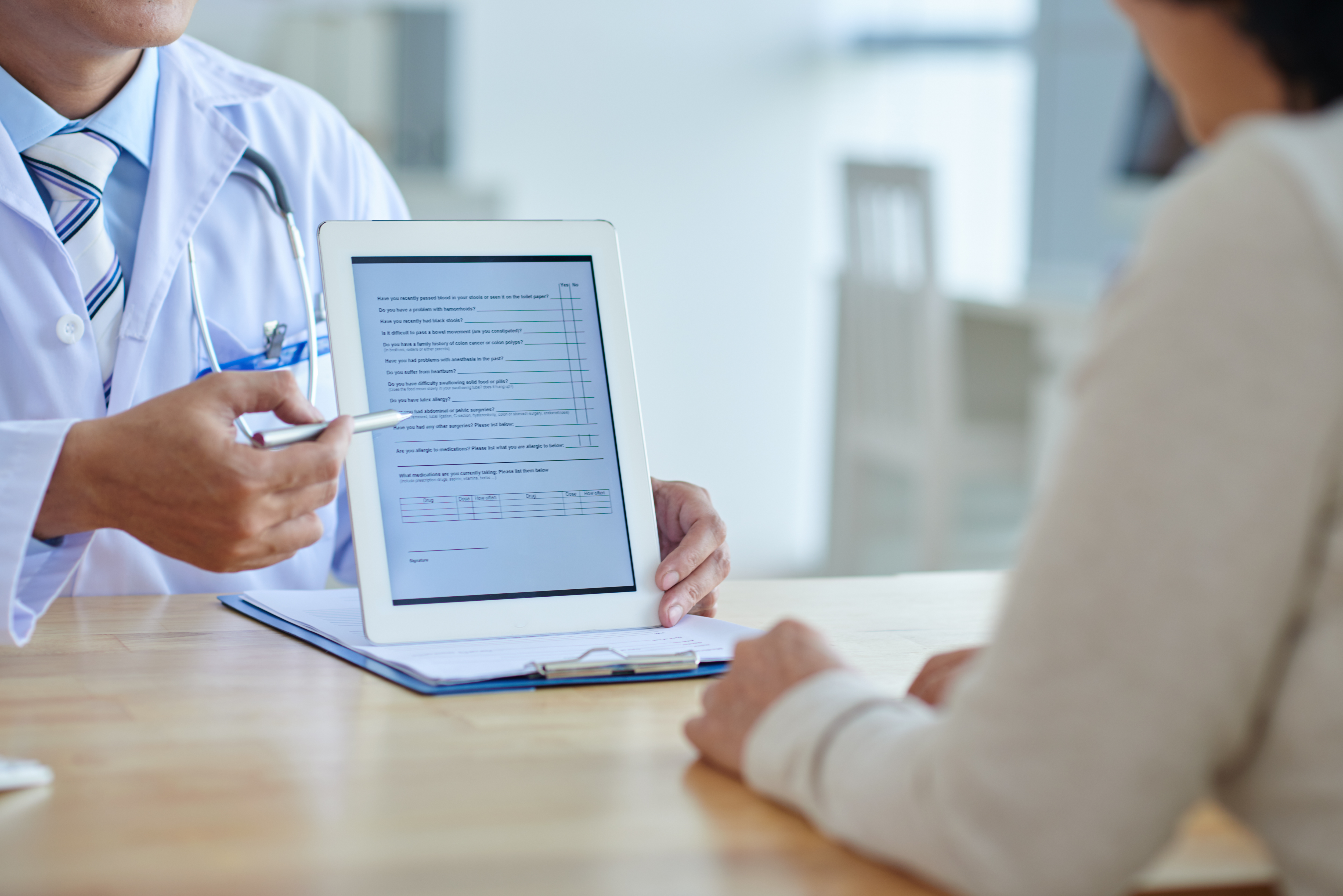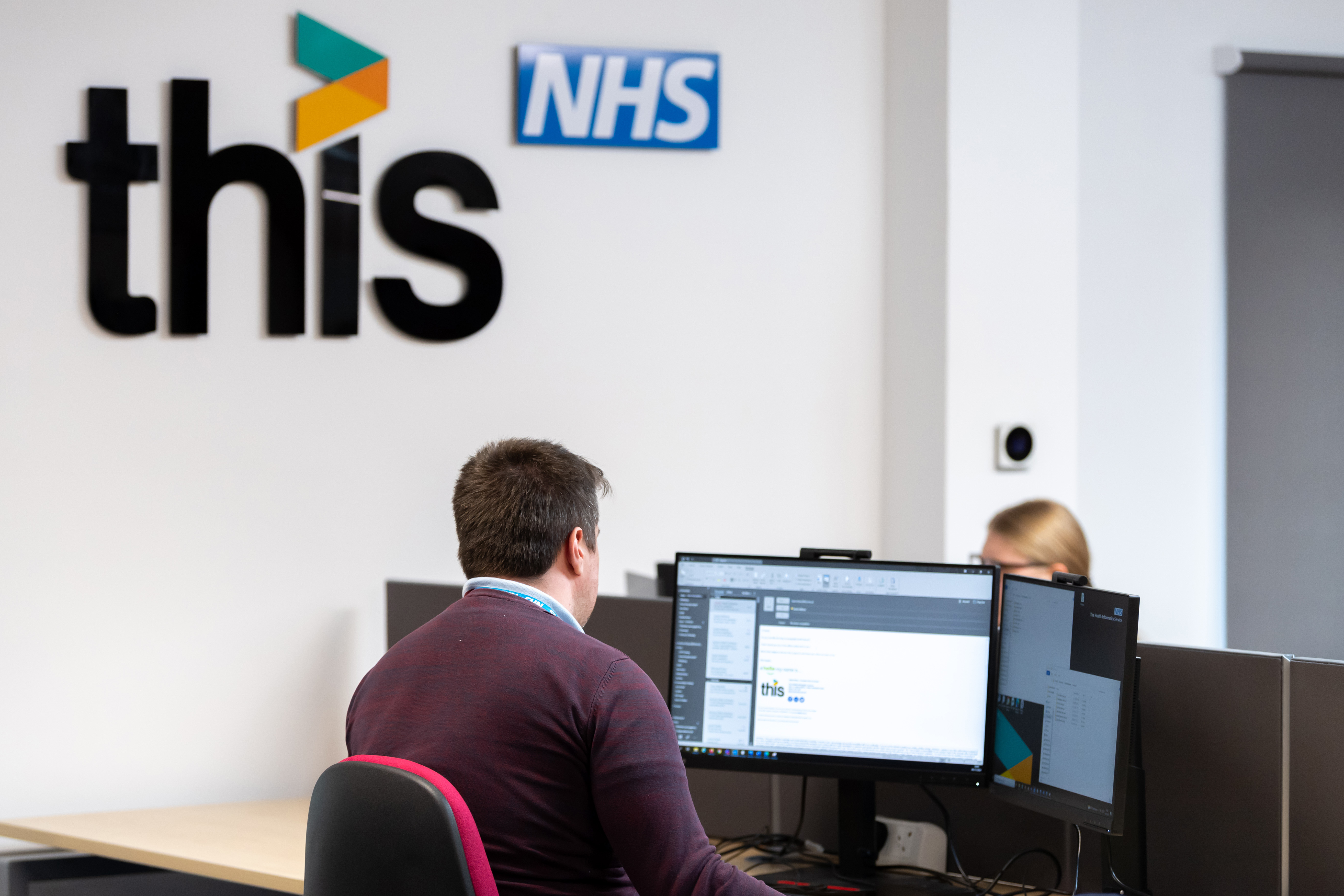Headlines about the digital transformation of the NHS often highlight mind-boggling amounts of money being allocated to health trusts by the government, such as Chancellor Rishi Sunak’s £5 billion to fund those trusts still using ‘paper-based systems’.
Some reports at the time said one-in-10 trusts were still of the ‘paper-based’ status. Being simplistic, that means nine-in-10 trusts are not.
But what is indisputable from the media’s-back-of-the-envelope calculation is that most health trusts have embraced more modern methods of working, and that includes a quiet revolution of digital health solutions.

The Health Informatics Service (THIS) enables new, empowering, efficient, and secure communications and IT services for clients including health trusts, GPs, laboratories, hospices, and care charities.
Digital health solutions delivered by THIS for its host trust, the Calderdale and Huddersfield NHS Foundation Trust (CHFT), have helped to contribute to its status as a ‘digitally aspirant’ trust, taking it from 150th in a digital trust league table to being one of the most digitally mature trusts in England. Its work is delivering:
- Better interoperability between systems.
- Asset tracking and equipment monitoring.
- Continuous development and expansion of solutions in line with the NHS’ digital aspirations.
The innovations and collaborations chronicled here are examples of our work with our host trust. It is important to stress however, that our solutions are just as relevant to other trusts and healthcare sectors.
Rob Birkett, THIS’ Director of Digital Services, says:
“We work with about 50 clients, with a core of 10 taking the bulk of our services. We’re in a unique position in terms of delivering across an array of services. For example, we know as much about GP systems as we do about a radiology department. There are not many other organisations in that position.”
What is digital health?
The definition of digital health, as seen through the eyes of Peter Howson, THIS’s Commercial Director, is of a layer of health provision that improves and enhances care for patients, while cultivating the healthcare landscape so those working in it can deliver smoother, better care in two ways:
- Creating a pro-active, sometimes predictive, ability to respond to a patient’s needs.
- Delivering faster, more efficient, and ultimately safer care.
It’s also a matter of connectivity and interoperability; creating a closed loop of care so that every building block of a care package is put into place as quickly and efficiently as possible, and then facilitating its development for the benefit of everyone involved – patients and clinicians.
Significant investment in building capability
In the last few years alone, THIS’ host trust has spent in the region of £16m on digital health solutions to change the healthcare landscape in its hospitals and in the services it supplies.
THIS’ role is to work with its trust - and its clients such as other trusts, GP practices, laboratories, hospices, and care charities - on building capability.
Peter Howson:
“We just don’t land projects; we build capability that iteratively needs to be improved. Yes, it’s important we land projects but then we start looking at the next cycle and build on them to make them better and better with maturity.
“A lot of the work we do comes about through our relationships with suppliers, and through sharing what we do on LinkedIn and Twitter. Sometimes a supplier will want to land a project, so they have a reference site to show other potential customers.”
Pioneering interoperability
Interoperability is a key component of digital health. One example of interoperability is THIS’ collaboration with two major suppliers to create a link between CHFT’s drug prescription system, hosted on EMIS software, and its Electronic Patient Record (EPR), hosted by Cerner Millennium. It is a first-of-type solution across the NHS, which has removed the need for duplicated tasks between two standalone systems.
Peter Howson:
“It meant people were having to use two systems because we were prescribing on EMIS and then having to transfer the information to the EPR.
“That interoperability is key for us. It's allowed us to speed up the procedural flow in the hospital by being able to prescribe and administer drugs quicker, and to get our discharges more efficient. It frees up pharmacy time too, which is critical for patients waiting to take their medicines home. Another benefit is that it reduces errors, because the information is going straight through to both systems.”
The link also supports the Trust’s closed loop drug administration policy, whereby drugs and patients are both barcoded and scanned to ensure they match before the medicine is administered, again with the aim of reducing errors.
Peter Howson:
“You might think it’s not that difficult to check a drug against a patient, but when you consider the number of drugs that we administer to the number of patients we administer to, it’s massive. Essentially, closed loop administration means we are giving the right drug, to the right patient in the right volume. A simple example is that if a patient is allergic to penicillin, then the digital matching of drug and patient won’t allow for any penicillin-based drugs to be given to that person.”

Putting your finger on a digital solution
THIS has facilitated the deployment of a digital solution to support the closed loop drug strategy’s aim of reducing errors. It uses fingerprint recognition technology to allow clinicians access to medical storage cabinets designed to provide safe and secure storage of controlled drugs and medications.
These electronic medicine cabinets from Omnicell use biometric information (fingerprints) to allow staff to access medications – replacing the traditional locked cupboard and the need to find physical keys.
The location of each drug contained in the cabinet - essentially a large vending machine - is specified and managed by the pharmacy department. When a clinician uses the cabinet only the drawer or area where the specific drug is stored is unlocked, and its location highlighted by flashing lights, making it easier for staff to quickly locate the correct medication.
Medication stock management is also improved, as the cabinet is linked to EMIS – the pharmacy software system, and stock levels and expiry dates can be seen online, making topping up and rotating stock a quicker process for pharmacy technicians.
Asset tracking and equipment monitoring
Everyone can relate to the frustration, sometimes panic, of misplacing their keys. Never say never, but in most cases, the consequences of misplaced keys are not going to create a situation where someone’s health is compromised.
Some digital health solutions might never garner thumping big headlines, but they provide answers so simple and fundamental to good healthcare it’s almost inconceivable they are only just beginning to emerge.
Realtime asset tracking built with integrated Cisco and Stanley Healthcare platforms allows CHFT to track every piece of critical equipment from doctors’ iPads to ventilators. It shows the location, status, and the closest piece of equipment to the patient.
Peter Howson:
“We all know that hospitals are big places, they're very busy and patient priorities are paramount. Equipment is dispersed across the hospital so how do you effectively find that kit and get it into get into a space where it’s at the right place at the right time with the right people? Before asset tracking, we had to search around 15 wards to find one piece of kit, now it can be traced with the push of a button.”
The Stanley Healthcare asset tracking software is also being used for active temperature monitoring of all refrigerators and freezers in CHFT’s two hospitals – Huddersfield Royal Infirmary and Calderdale Royal Hospital.
Fridges and freezers are essential equipment, correctly storing and preserving drugs, vaccines, serum, blood, tissues, organs for transplant and many other items. They are necessary to ensure the best conditions for treatments and preventive activities.
Peter Howson:
“During the height of the pandemic a trust was criticised for losing 500 covid vaccines because its refrigerators weren’t working correctly, so they had to throw them away. It’s a simple example, but it shows the importance of active temperature monitoring.
“It also means we don’t have someone walking around the hospitals every couple of hours checking fridge temperatures. It’s an administration task so a system can do that and free up a person who can actually look after patients.”
Innovation and change in a post-pandemic world
Predictive analytics data assists health organisations to enhance care for patients, improve outcomes and cut costs with predictive modelling about when, how, and where care should be provided.
THIS is working with CHFT to introduce predictive analytics that will provide near time mortality ratios – speeding up a process that currently has a three-month lag time. The predictive data allows key personnel to see crucial information three months ahead of when they would normally receive it.
Harnessing data for predictive analytics allows healthcare organisations to proactively improve patient health by working to reduce hospital readmissions, predict the need for additional care and help to effectively schedule resources based on more-accurate predictions of how long different types of patients are likely to require them.
The benefits of predictive analytics and the data it employs go further than individual patients. It is also offering a significant advantage to organisations responsible for management of mass public health trends, improvement programmes and health emergencies, such as epidemics or the Covid-19 pandemic.
The pandemic also saw a radical change in how THIS operated its Information Governance (IG) and Registration Authority (RA) processes, opting for remote working for its teams to reduce the spread of Covid among staff with the aim of maintaining good service and support for our host trust and our clients.
With all face-to-face activity in the IG and RA arenas suspended, Microsoft Teams was used to aid communication and collaboration.
As the threats of the pandemic recede, NHS Digital is considering new ways of working based on the lessons learned over the pandemic. One proposed solution is a self-service registration portal, and THIS has been asked to contribute to the consultation process.
Melanie Hill is THIS’ Information Governance and Registration Authority Manager. She says:
“Ideally, we would like to resort to seeing clients face-to-face but there is no doubt Microsoft Teams appointments and posting out Smartcards has relieved the pressure on our RA service in the circumstances.
“Posting out Smartcards had been requested of us before the pandemic but never agreed, it just wasn’t something we would consider. But in the context of the pandemic, posting out a Smartcard was no greater risk than posting out a bank card.
“Going forward, I think a combination of face-to-face and Teams appointments are a good compromise and we will be on hand to support our customers irrespective of the options that are available to them.
“In fact, Teams appointments, the potential option to self-register and removing the restriction of a face-to-face meeting provides THIS with an opportunity to overcome geographical restrictions of new Smartcard users having to meet with us in person, making it more of a viable proposition to provide services to organisations anywhere in the UK.”
Sustaining a new imperative
The pressure on the NHS imposed by the Covid-19 pandemic created a new imperative for streamlined working, which the Stanley Healthcare platform answered in many ways.
THIS’ team collaborated with clinical and medical engineering colleagues at CHFT and completed the asset tracking implementation in just seven days.
Peter Howson:
“Once everything was in place the deployment was rapid. But before that, we did all the procurement work and went to market to find the best solution available. We then project managed the deployment, and all the back-end infrastructure was done by us too.”
The pandemic says Peter, created a ‘laser-sharp’ business focus and effective decision-making on digital solutions to speed up the delivery of health care – virtual consultations being one good example.
But he adds:
“I think the question we should be asking now is how do we sustain what we’ve achieved? People want to engage now. But how do we keep the option there for the people who want digital solutions. So, it's about going on a journey where we create digital solutions but maintain people’s desire to engage with each other.”
More information about digital solutions
Find out more information with our white paper on predictive analytics or an insight into our work with voice recognition technology.
Get in touch
If you are interested in working with us, contact us.

Subscribe to Informatics Insights & Advice
Take advantage of the latest news and information from The Health Informatics Service. Read about our innovative work with healthcare clients across the UK and get our expert insights and recommendations to help and inspire your work.

